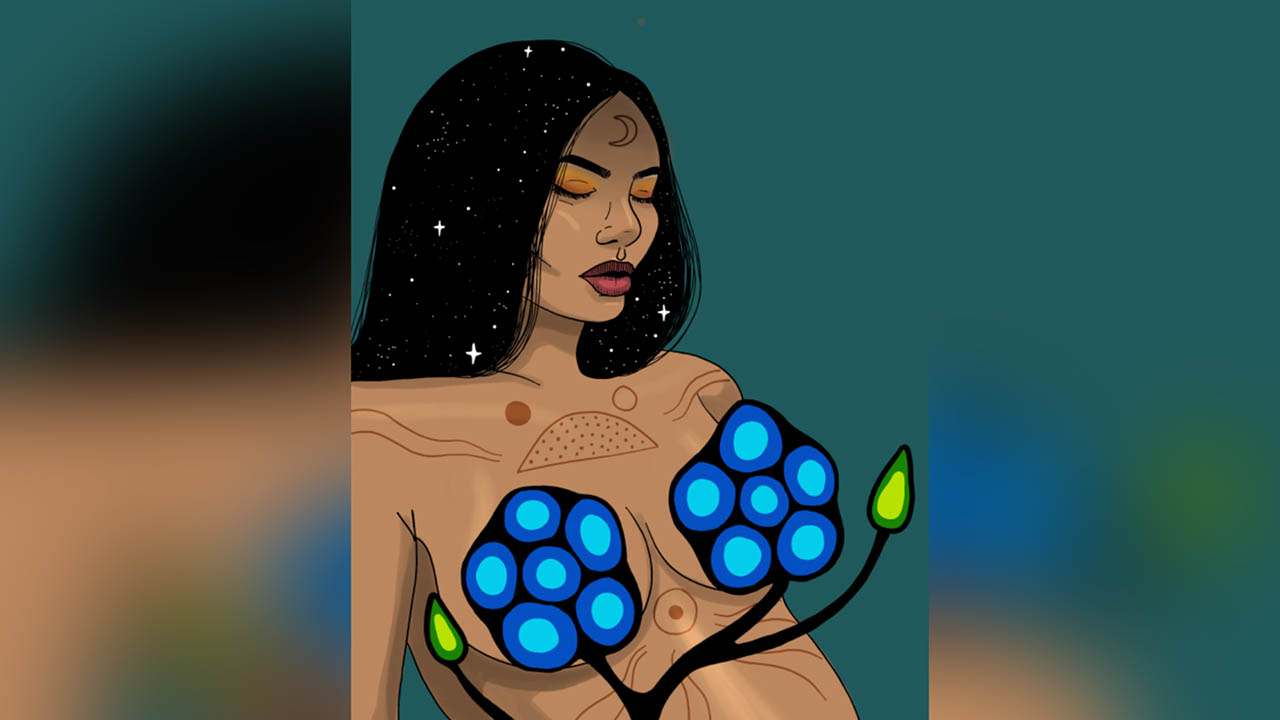Indigenous artist to be featured in Siskinds Gallery
 CREDIT: CHIEF LADY BIRD
CREDIT: CHIEF LADY BIRDThe exhibit featuring Chief Lady Bird's art will run from Feb. 13-17 in Siskinds Gallery, located in room H1015.
From Feb. 13-17, Siskinds Gallery, located in Fanshawe’s H building, will feature the work of Chief Lady Bird, a Chippewa and Potawatomi artist from Rama First Nation and Moosedeer Point First Nation. The exhibit will feature 12 different pieces of her work, with the theme of celebrating all bodies and sexualities.
Chris Hannah, Fanshawe’s Indigenous strategic learning guide, explained that the theme could be simply explained as “no shame in my bundle,” a term coined by Sage Petahtegoose, who is Ojibwe-Podewadmi from Atikameksheng Anishnawbek.
“In Indigenous ways, your bundle is all of your gifts and your skills,” Hannah explained. “If we’re talking about this idea that there’s no shame in my bundle, that includes our bodies, that includes our sexuality, and that includes our entire selves.”
Hannah, who is Métis from Drummond Island and Penetanguishene, collaborated with Leah Marshall, Fanshawe’s sexual violence prevention advisor, in order to put this exhibit together. Marshall described the idea as a celebration of all bodies and sexuality, while pushing back against standard beauty standards.
“We saw it as a good opportunity to…talk about the implications of colonization on how people’s bodies are viewed, especially female identified folks, non-binary folks, and Two-spirit folks.”
Chief Lady Bird was the first artist the two decided on, seeing her artwork as perfect for the idea they wanted to convey with the gallery.
“We wanted to host something around Valentine’s Day to promote some of the messages that we put forward in the work that we do to empower students,” Marshall explained. “The artwork in itself is incredibly beautiful, and representative of the message, but it's also her words, and the context of why she creates the art that really spoke to us in terms of the messages that we wanted to be available on campus to students.”
Marshall added that the message of self-love and self-care is important to hear in the middle of winter, and encourages students to come to the gallery. Hannah also saw Chief Lady Bird’s art and the exhibit as a way to change the narrative around Indigenous women.
“I think a lot of what goes on with missing murdered Indigenous women is a fetishization of Indigenous women and girls. And so if we can reclaim that and take our own power back, and use it in a way that is beneficial for us. It’s really powerful to be reclaiming without focusing on the violence all of the time.”
In that same vein, she said that with the tragedies that have happened to Indigenous peoples, such as the mass graves of children found at residential schools, people tend to look at Indigenous people with pity. But she believes exhibits such as this one can show that there’s more they can offer.
“We’re not just our trauma, we’re not just the bad things that have happened to us, we bring a lot to the table. And there’s a lot to celebrate, including our sexuality in a way that is done for us and by us. I think that could be a really good learning experience for students.”
















